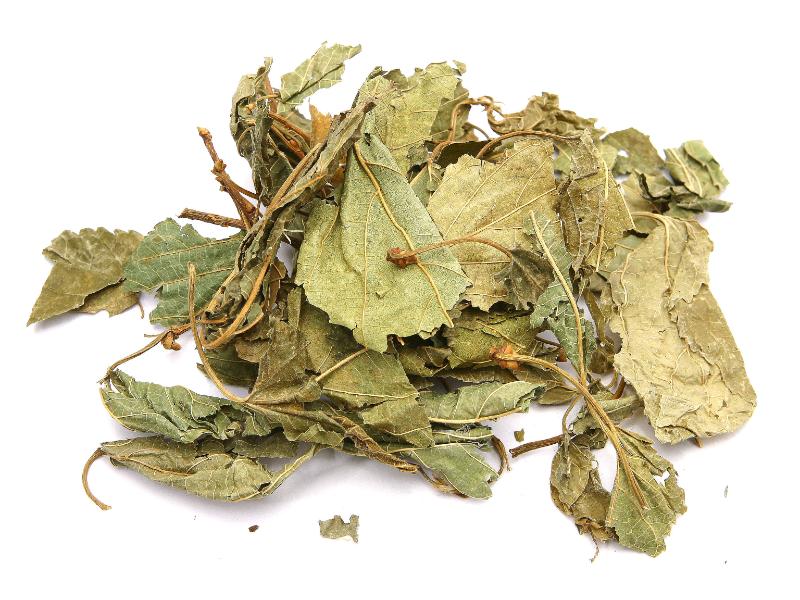Search in medicinals
Mori Folium
Mulberry leaf
桑叶 〔桑葉〕 sāng yè

Alternate English names: white-mulberry leaf
Alternate Chinese names: 桑树叶 sāng shù yè
Kingdom: Plant
Origin in PRC Pharmacopoeia: Morus alba L. (PRC Pharmacopoeia)
Origin in unofficial sources: Morus alba L.*; Morus cathayana Hemsl.; Morus mongolica Schneid.
Use: Medicinal
Category: Exterior-resolving agents / Cool acrid exterior-resolving agents
Properties: Acrid, sweet; cold.
Channel entry: Lung, liver channels.
Actions and indications:
- Disperses wind-heat: External contraction of wind-heat, with heat effusion, clouded head, headache, cough, and painful swollen throat.
- Clears the liver and brightens the eyes: Dry
painful red eyes and profuse tearing, due to liver channel repletion heat or wind-heat.
Dosage and method: Oral: 5–10g . Used in decoctions and pills. Can be decocted as an eye wash.
Product description: The dried leaves are usually shrunken and broken. Those intact are ovate or wide ovate, 8–13 cm long and 7–11 cm wide. The tip and margins are serrated, sometimes with irregular incisions. The base is truncated, rounded, or heart-shaped. The upper surface is yellow-green with a slight sheen, and fine down along the veins. On the paler under surface, the protuberant veins form a reticular pattern.
Quality: Clean, unbroken leaves that are yellow-green in color are the best.
Production area: Jiāngsū, Zhèjiāng, Héběi, Hénán, and Húnán.
Etymology: The name sāng yè 桑叶 literally means mulberry leaf.